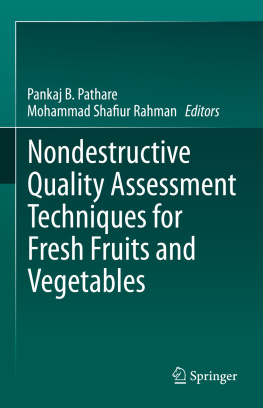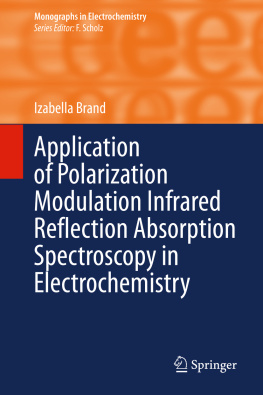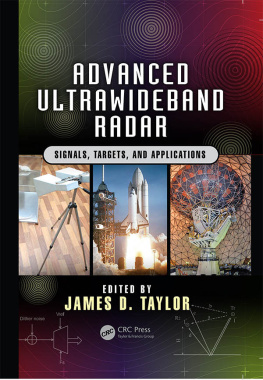Editors
Pankaj B. Pathare
Department of Soils, Water and Agricultural Engineering, Sultan Qaboos University, Al-Khod, Oman
Mohammad Shafiur Rahman
Department of Food Science and Nutrition, Sultan Qaboos University, Al-Khod, Oman
ISBN 978-981-19-5421-4 e-ISBN 978-981-19-5422-1
https://doi.org/10.1007/978-981-19-5422-1
The Editor(s) (if applicable) and The Author(s), under exclusive license to Springer Nature Singapore Pte Ltd. 2022
This work is subject to copyright. All rights are solely and exclusively licensed by the Publisher, whether the whole or part of the material is concerned, specifically the rights of translation, reprinting, reuse of illustrations, recitation, broadcasting, reproduction on microfilms or in any other physical way, and transmission or information storage and retrieval, electronic adaptation, computer software, or by similar or dissimilar methodology now known or hereafter developed.
The use of general descriptive names, registered names, trademarks, service marks, etc. in this publication does not imply, even in the absence of a specific statement, that such names are exempt from the relevant protective laws and regulations and therefore free for general use.
The publisher, the authors, and the editors are safe to assume that the advice and information in this book are believed to be true and accurate at the date of publication. Neither the publisher nor the authors or the editors give a warranty, expressed or implied, with respect to the material contained herein or for any errors or omissions that may have been made. The publisher remains neutral with regard to jurisdictional claims in published maps and institutional affiliations.
This Springer imprint is published by the registered company Springer Nature Singapore Pte Ltd.
The registered company address is: 152 Beach Road, #21-01/04 Gateway East, Singapore 189721, Singapore
Preface
Quality and safety of fresh fruits and vegetables are of the utmost importance to consumers, retailers, and processors. Traditional methods of quality evaluation, such as mechanical or chemical approaches, are destructive and time-consuming. In addition, chemical methods need to use many chemicals and many of these may be toxic and difficult to dispose. Nondestructive testing is an emerging technology for the fast and easy testing of external and internal fresh produce quality. In recent years, significant progress has been made on the nondestructive methods to develop and their applications in food quality detection. Due to its rapid and nondestructive benefits, nondestructive testing is becoming a key technical support for promoting the fresh produce business by applying technology in an intelligent way.
This book titled Nondestructive Quality Assessment Techniques for Fresh Fruits and Vegetables contains details of the nondestructive approach to feature the present-day trends and existing future opportunities in the fresh food supply chain. First, this book provides an overview of different nondestructive techniques in food quality detection. Then it presents nondestructive methods: monochrome computer vision, imaging techniques, biospeckle laser technique, Fourier transform infrared (FTIR) spectroscopy, hyperspectral imaging, Raman spectroscopy, near infrared (NIR) spectroscopy, X-ray computed tomography, ultrasound, acoustic emission, chemometrics, electronic nose and tongue. Selected applications on each method are also introduced in this book. As a result, the reader can definitely experience a better understanding of how to use nondestructive methods and technologies to detect the quality of fresh fruits and vegetables.
With various interesting topics covered, it is expected that the book will benefit a wide array of audiences including postharvest and food scientists/technologists, industry personnel, and researchers involved in the field of fresh produce quality detection. Besides, the book can serve as a readily accessible reference material for postgraduate students including Ph.D. students, and scientists can extend their knowledge in these research fields. The editors are confident that readers will find this book informative and interesting.
Pankaj B. Pathare
Mohammad Shafiur Rahman
Al-Khod, Muscat, Oman
Acknowledgments
As the editors of this book, we are grateful to all of our research collaborators for their invaluable contributions. We wish to express our sincere gratitude to Sultan Qaboos University, Muscat, Oman, for providing us the opportunity, facilities, and support to execute such an exciting book project. We sincerely acknowledge our parents and teachers for their unconditional contribution in our educational progress and support in life. We acknowledge our spouses and children for their kind support with their encouragement and patience throughout the project. Special thanks to our colleagues and other research team members for their support and encouragement.
Contents
Pankaj B. Pathare and Mohammad Shafiur Rahman
Krishna Kumar Patel , Abhimanyu Kalne and Pankaj B. Pathare
Hulya Cakmak and Ece Sogut
O. J. Sujayasree , R. Pandiselvam , A. K. Chaitanya and Anjineyulu Kothakota
Khayelihle Ncama and Lembe Samukelo Magwaza
Asif Ahmad and Haris Ayub
Maimunah Mohd Ali and Norhashila Hashim
Rasool Khodabakhshian
Umezuruike Linus Opara , Ebrahiema Arendse and Lembe Samukelo Magwaza
Umezuruike Linus Opara and Ebrahiema Arendse
Mohsen Azadbakht
Fikret Yildiz , Selman Uluisik , Ahmet Turan zdemir and Hakan mamolu
Akinbode A. Adedeji , Nader Ekramirad , Alfadhl Y. Khaled and Chadwick Parrish
Md. Nahidul Islam
Adinath Kate , Shikha Tiwari and Debabandya Mohapatra
Zahir Al-Attabi , Nasser Al-Habsi and Mohammad Shafiur Rahman
About the Editors
Pankaj B. Pathare
is an Assistant Professor of Postharvest Technology at Sultan Qaboos University, Oman. He has graduated with a B.Tech degree (Agricultural Engineering) from Dr. Panjabrao Deshmukh Krishi Vidyapeeth, Akola (India), and PhD (Process & Chemical Engineering) from the University College Cork (Ireland). Before joining at SQU, he worked as researcher at Newcastle University, UK, and Stellenbosch University, South Africa. He has gained expertise on postharvest technology and food engineering which includes quantification of postharvest losses during transportation, mechanical damage of perishables, food agglomeration/granulation, food drying and cooling, and structural design of corrugated packaging. The research results are well documented in 50 original scientific peer-reviewed journal papers. He also worked as supervisor/co-supervisor for ten postgraduate research students. He is a member of the editorial board of several research journals including PLoS ONE, Frontiers in Sustainable Food Systems










